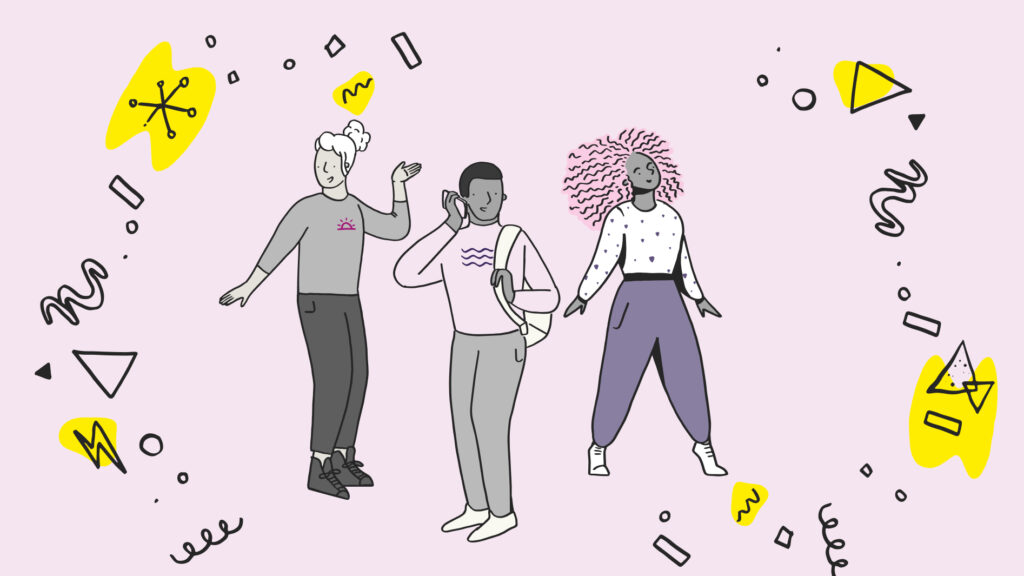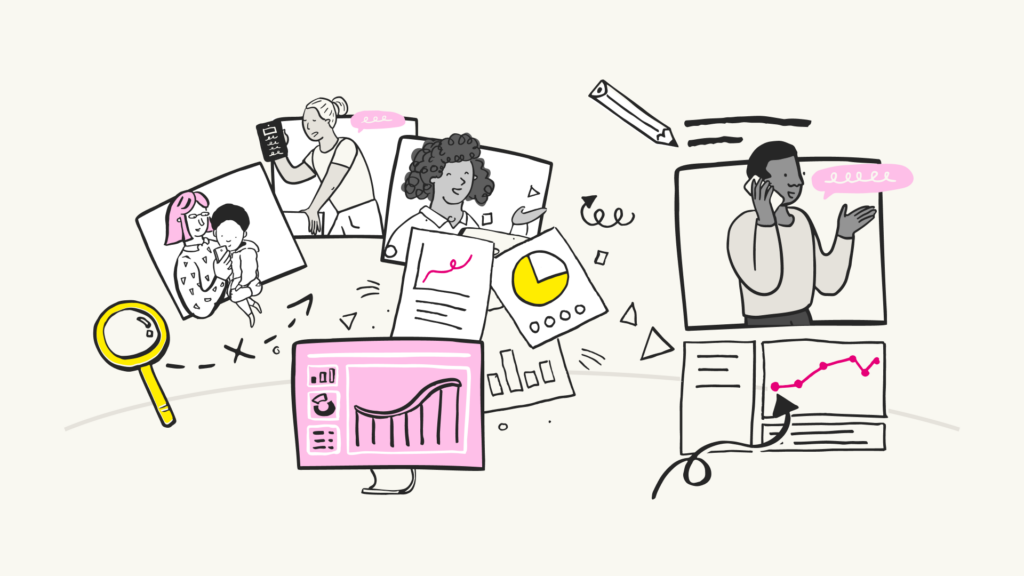Traditionally, most retail organisations viewed their customer journeys as a linear set of stages. Clear and predictable, this funnel approach laid out some solidly researched steps spanning awareness, interest, consideration, evaluation and purchase.
This would suggest that the buying experience is a simple and sequential process with an ever lessening number of potential options that eventually culminate in a tidy conversion.

As with all aspects of humans and their behaviour, the reality is much messier. Understanding this tangle of customer motivations and choices can help build richer experiences, and ultimately create more opportunities for sales.
Back in 2009, McKinsey posed that instead of seeing decision making as a series of consecutive events, it was really more of a complex loop. This was a really important shift in perspective, as it hints not only at a less simple and sequential process, but also the returning customer’s journey. Their post-purchase experience is incredibly important when it comes to encouraging return purchases and creating customer loyalty.
The loops and the lazy
Research and insights can tell you a lot about your customers and their level of loyalty to your brand. In general, loyalty falls into one of two camps. The ‘engaged’ loyal and the ‘lazy’ loyal.
Some customers have had a great experience with your business. Both the buying process and the after care was so positive in fact that not only will they buy your products again, they will tell their friends about your product, engage with you on social media and other channels, and generally be an advocate for you.
For many though, the return visit is about avoiding effort rather than a deeper connection. The effort of evaluating against options when you have something that’s at least viable is often unappetising. It is not hard to offer alternatives to the lazy loyals if you’re able to make the effort of change seem minor.
Experience design can certainly help with this type of transaction. You should look at competitors’ lazy loyals as a target segment that could open up new swathes of customers you might not have had access to otherwise.
Encouraging customer loyalty today
A lot has changed since 2009, but your engaged loyal customers are more important than ever. With the pivot from traditional marketing channels to the influencer marketplace, we’ve seen an evangelisation of customers who are seen as a source of evaluation. Their testimonies become evidence points for potential customers at an earlier level of the retail loop. And they’ve proven to be as effective as traditional product based marketing channels.
Evaluation is not a neat “pruning” of potential products. New options can enter at this phase and previous loyalty to brands are sometimes discarded. Word of mouth, influencers, bloggers guide this consideration phase of the decision making process.
Previously, consumers would have followed a process similar to the below:
-
- Brand awareness
-
- Product consideration
-
- Many products discarded
-
- Research
-
- Discard more
-
- Choice
-
- Purchase
-
- Aftercare
Now it’s closer to the illustration below:
-
- Product seen or influencer seen
-
- Research to find which brand that product is from
-
- Disregard some
-
- Find others that take their place
-
- Visual research
-
- Word of mouth
-
- Choice
-
- Purchase
-
- Unbox
-
- Evangelise
Further complexity makes this a web
As well as updating your customer journeys to encompass more complex funnels or loops of decision making, you’ll also need to consider how different groups of your customers alter in their behaviour. This is where personas come in. Personas can help to transform behavioural patterns and data points into evidence-based artefacts. They should be used as a tool or reference point when planning out and prioritising your ‘interventions’ in the decision making process.
I say ‘intervention’ rather than features or tools because the types of actions planned out through personas are moments where you figuratively step into their buying journey. This might be through copy or content changes when presenting to certain types of user. Or, it may be a “real world” intervention in the form of a call centre or in-store experience.
Personas are the keystone to a successful personalisation strategy for your customers. By pulling out the stages as seen by each persona, you can create a map of interventions for every persona at every stage.
Combine this with real data and you can make thresholds for personalisation at key moments. Do you know their location, or what they bought last time? How about if they are new to your products or brand? This data can be used to meet a threshold for presenting a simplified version of copy with store locations near them highlighted, or suggesting personalised offers for related or linked products.
Personalisation as an intervention needs to be thoughtfully tackled as it can just as easily make an experience worse for the customer. Personas and an evidence-based approach can help you plan out a personalisation strategy. Meanwhile, continued usability testing can get qualitative feedback on its efficacy.
Are you only optimising through AB testing?
Often clients will ask “Can’t we discover this through AB testing?”
The answer is, well, sort of.
You must have been through an experience that has been AB tested to death – they’re the ones that seem to lack a cohesive approach. This can affect usability as well as lending the experience a manic quality that many people find off-putting.
AB testing can also originate a number of “dark” UX patterns. These include features like artificial scarcity (“only 3 left at this price”) or suspect social proof (“9 other people are looking at this right now!”). Both of those things may make your conversions go up slightly, but you are sacrificing experience and ultimately trust in your services or products.
Also, I find that AB testing can tell you the ‘what’ but not the ‘why’. Usability testing should be more than simply asking preference or adopting a “pick a card, any card” approach to prototyping experience variations. The depth of understanding required to understand shifts in choices and decision-making comes from a robust combination of qual and quant work. It is a distinctly human task that automation can help with, but ultimately the analysis and curation of insight must come from hours of study observations.
What qual and quant together with a human interpreter can give you is a strategy of marginal gains. We seek the 0.5% improvement at multiple touchpoints – including post-sale – rather than just making one area (so often the conversion point) 20% better through sporadic interventions and calls to action.
Customer journeys should not stop with a shipping code
Working from personas and well researched user journeys allows you to track insight from the people who use your service or product directly from their mouths (and screens). This is done through the wireframing, design and development process.
Personas and the insights garnered through them should be represented in every development task ticket, and be written into the acceptance and testing criteria of everything you build. This golden thread drawn from research through to shipping code allows teams to truly understand what they’re creating. It guides all those difficult prioritisation conversations and compromises that every project needs to manage.
Research into user journeys and the personas it produces finally gives us the ‘why’ behind customer buying behaviour. The loop of analysing performance and iterating improvements allows us to evolve our product continually. And it empowers us to optimise in a more mindful way than with A/B testing alone.
Whether you’re starting from scratch or want to build on existing customer research, Nomensa can help you to deliver better user experiences from a solid basis of understanding. To discuss the unique challenges and opportunities facing your organisation, get in touch with our team today by emailing hello@nomensa.com or calling us on +44 (0) 117 929 7333.
We drive commercial value for our clients by creating experiences that engage and delight the people they touch.
Email us:
hello@nomensa.com
Call us:
+44 (0) 117 929 7333





